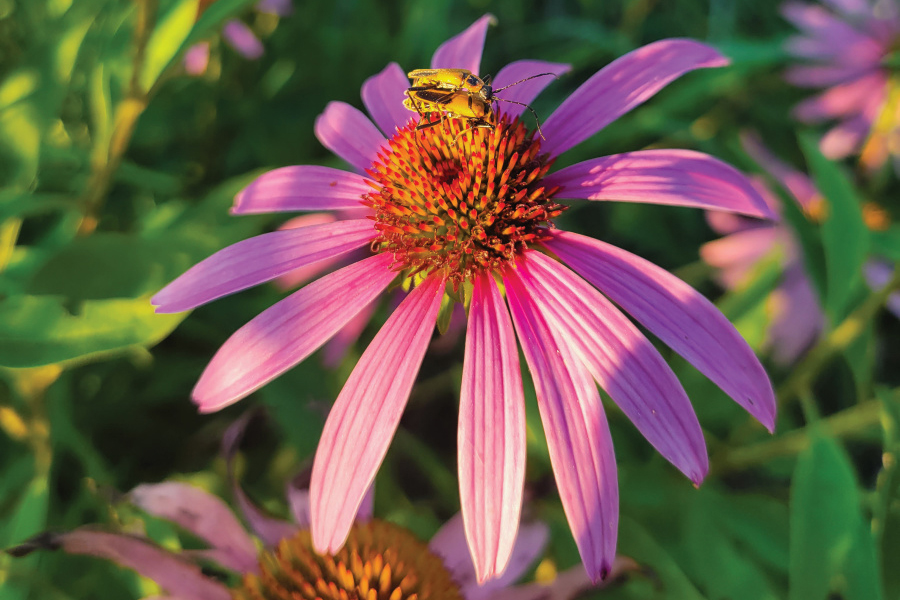Home > Indiana > Indiana Environment > CREP Helps Indiana Farmers Protect the State’s Soil and Waterways
CREP Helps Indiana Farmers Protect the State’s Soil and Waterways
In partnership with: Indiana State Department of Agriculture

In the last four years, there have been slow and steady positive changes on the Zolman property. Don Zolman and his wife, Darci, are participants in the Conservation Reserve Enhancement Program (CREP). This is a state and federal partnership program that provides financial incentives to property owners who convert less prosperous cropland to native vegetation, such as trees and grasses.
Located in the Tippecanoe Watershed in Kosciusko County, about 45.5 acres of the Zolmans’ 3,500 have become a refuge of sorts. Sandhill cranes started nesting, pollinators buzz through the wildflowers, migrating waterfowl stop at the wetlands in the spring and fall, and osprey hunt for fish in their pond, where otters play. Herds of deer travel through the land, as well as rafters of turkey.
“It’s gratifying to see more animals out there utilizing the property,” Don Zolman says. “I think once the trees are in full growth, then it will really be a very different place. Something we won’t see in our lifetime, but it will be like a refuge of its own.”
Indiana partnered with the U.S. Department of Agriculture to target watersheds in more than 65 counties experiencing sediment, nutrient, pesticide and herbicide runoff. Since the CREP’s inception in 2005, Indiana has planted more than 4.2 million trees.
See more: Indiana Dairy Embraces Sustainable Practices to Protect Farmland and the Planet

Proof Positive
By turning the land back to its natural state, soil and water quality improves – and the Zolmans have seen it firsthand. When the couple signed on to participate in the CREP, experts came out to decide which parcels of land would be the best fit for different initiatives, such as tree planting, wildflower fields, or filter strips and buffers for bodies of water.
That was three years ago, and the pine, oak, walnut, tulip poplar and plum trees are already making an impact. Three acres of land have blossomed into an abundance of wildflowers. In addition, technicians come out to check on the project’s progression and provide recommendations as the earth changes.
Conservation isn’t a new practice for the couple. For example, Don switched to no-till in 1978, installed waterways and filter strips, and uses cover crops to protect the soil on his property. Throughout the 3,500-acre farm, they’ve participated in other programs aimed at sustainability as well.
The Zolmans credit the Kosciusko County Soil and Water Conservation District’s board of supervisors, who they say practice what they preach when educating the public about sustainable farming and land conservation practices. They also appreciate the technical assistance provided by local Natural Resources Conservation Service staff.
“We’re all citizens of this county, and we know the abundance of water has a big impact on our community and protecting it by keeping that soil on the land is really important,” says Darci, who is also the program administrator with the conservation district. “We look at CREP as being another one of the tools available to help us conserve the land.”

As a member of the district, educating the public about these programs is essential, Darci says. This includes field days, workshops and youth education programs to instill conservation ethics at an early age. She herself conducts rafting trips with youngsters to show them how everything is connected.
On just the Zolman property, their waterways drain into the Winona, Goose and Tippecanoe lakes, as well as the Tippecanoe and Eel rivers. With their efforts, they’re helping protect the soil and waterways beyond their acreage.
“We feel really good about what we’re leaving behind,” Darci says.
See more: The Dirt on Soil Conservation



